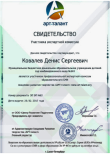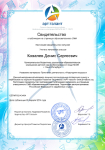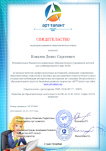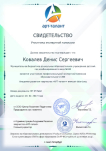Learner corpora and second language acquisition
Malika Kholmatova
4th grade, Faculty of Foreign Languages, Jizzakh State Pedagogical University, Jizzakh, Uzbekistan
Key words: Learner corpora, second language acquisition, interlanguage, contrastive interlanguage analysis, data-driven learning, artificial intelligence, corpus linguistics, error analysis.
Abstract: This paper explores the evolving role of learner corpora in second language acquisition (SLA) research, emphasizing their methodological, theoretical, and pedagogical implications. Learner corpora—systematically compiled collections of second language data—enable scholars to examine linguistic development empirically and trace interlanguage patterns across proficiency levels and linguistic backgrounds. By integrating corpus-based evidence with established SLA theories, such as Krashen’s Input Hypothesis and Schmidt’s Noticing Hypothesis, researchers have gained deeper insights into error regularities, lexical development, and phraseological competence. The study highlights how corpus methodologies, particularly Contrastive Interlanguage Analysis (CIA), foster cross-linguistic comparisons and data-driven learning practices. It also addresses ongoing challenges related to representativeness, annotation reliability, and ethical data handling. Finally, the paper considers future directions, including the integration of artificial intelligence (AI), natural language processing (NLP), and multimodal corpora to enhance both research precision and pedagogical application. Learner corpus research thus emerges as a vital bridge between linguistic theory, technology, and classroom practice.
Over the past few decades, the convergence of corpus linguistics and second language acquisition (SLA) has produced one of the most methodologically rigorous and theoretically fertile domains in applied linguistics: learner corpus research. A learner corpus can be defined as a systematically compiled and electronically stored collection of written or spoken texts produced by individuals acquiring a second or foreign language. Far more than passive archives of learner performance, these corpora serve as dynamic tools through which researchers can explore the intricate pathways of linguistic development, trace the evolution of interlanguage, and observe the interplay of transfer, proficiency, and communicative intent.
The advent of learner corpora represents a decisive epistemological shift — from intuition-driven theorizing to data-oriented empiricism. By providing authentic, large-scale evidence of learner language, corpus-based approaches have redefined how scholars conceptualize acquisition, error, and linguistic progression. Moreover, they have established a bridge between theoretical linguistics and pedagogical practice, allowing for the development of curricula, materials, and assessment frameworks grounded in actual learner output. In essence, learner corpora illuminate not only what learners produce, but also how and why they construct language in the ways they do.
As computational tools for corpus annotation and linguistic analysis continue to evolve, the potential for learner corpus research grows exponentially. The field now stands at the intersection of linguistic theory, artificial intelligence, and education, offering unprecedented opportunities to model and support the process of language learning through empirical precision and technological sophistication.
Learner corpora differ fundamentally from native-speaker corpora both in composition and purpose. Whereas native corpora capture linguistic norms within a speech community, learner corpora document the evolving interlanguage systems of second-language users (Granger, 1998). These datasets encompass a range of modalities — essays, spoken interviews, classroom interactions, or digital communications — reflecting the multifaceted nature of language learning.
The origins of learner corpus research can be traced to pioneering projects of the 1990s, most notably the International Corpus of Learner English (ICLE) and the Longman Learners’ Corpus (LLC) (Nesselhauf, 2005). These initiatives laid the foundation for the development of specialized databases such as LOCNESS, EFCAMDAT, and ICLEC, which collectively transformed SLA into an empirically testable science. Modern corpora are often annotated for morphosyntactic, lexical, and pragmatic features, enabling fine-grained quantitative and qualitative analyses. As a result, researchers can investigate interlanguage not as a set of isolated errors, but as a systematic and evolving linguistic system with its own internal regularities.
The alliance between learner corpus research and SLA theory has generated a robust empirical framework for studying language development. Corpus methodologies, by revealing large-scale patterns of learner behavior, complement and enrich traditional psycholinguistic and cognitive models of acquisition (Granger, 2015).
Error analysis remains one of the most enduring and informative applications of learner corpora. By systematically identifying and quantifying errors across large datasets, researchers can map the developmental stages of interlanguage (Selinker, 1972). Corpus studies frequently uncover predictable patterns — for instance, the omission of articles or prepositions by speakers of article-less languages — that testify to first-language interference. Such findings lend empirical support to theoretical constructs like transfer, fossilization, and restructuring.
Longitudinal corpora, which follow learners over time, have further enriched SLA theory by providing concrete evidence for developmental change. The gradual decline of specific error types, for example, substantiates Krashen’s (1985) Input Hypothesis and Schmidt’s (1990) Noticing Hypothesis, both of which stress the importance of comprehensible input and conscious awareness in linguistic advancement. Through corpus data, abstract models of acquisition acquire measurable, observable dimensions.
Learner corpus research has also revolutionized our understanding of lexical and phraseological development. Frequency-based analyses reveal that learners, particularly at intermediate levels, rely heavily on a narrow repertoire of high-frequency verbs (e.g., make, do, get), exhibiting limited lexical variation and collocational range (Paquot, 2010). Comparisons with native corpora expose typical non-standard collocations such as strong rain or do a photo, which reflect both lexical transfer and restricted formulaic competence.
These insights extend beyond description into pedagogy. By identifying areas of lexical underuse and misuse, corpus evidence provides teachers with empirically grounded priorities for vocabulary instruction. Moreover, phraseological research — exemplified by the work of Granger and Meunier (2008) — demonstrates that even advanced learners struggle with idiomaticity, underscoring the need for teaching approaches that emphasize multiword units and recurrent patterns rather than isolated words.
Perhaps the most methodologically influential development in learner corpus research is Contrastive Interlanguage Analysis (CIA) (Granger, 1996). CIA involves systematic comparison between learner and native corpora, as well as between learner groups with different first languages. Such comparative analysis reveals both universal tendencies in interlanguage and L1-specific influences. For example, Uzbek learners’ omission of English articles can be contrasted with French learners’ overuse of definite articles, each pattern reflecting distinct linguistic transfer. CIA thus bridges corpus linguistics and contrastive analysis, offering empirical insights that refine both SLA theory and pedagogy.
The pedagogical implications of learner corpus research are far-reaching. Corpus evidence enables educators to move from prescriptive intuition to data-driven precision, aligning instruction with learners’ actual needs (Gilquin et al., 2007). Lists of frequent errors, miscollocations, and syntactic simplifications can inform syllabus design and teaching materials.
Equally transformative is the principle of Data-Driven Learning (DDL) (Johns, 1991), which positions learners as language investigators. By examining authentic corpus data, students identify patterns, hypothesize rules, and test their assumptions — thereby cultivating analytical awareness and self-regulation. DDL nurtures autonomy, promotes noticing, and encourages learners to engage critically with language rather than passively consuming prescriptive rules.
In language assessment, corpora are increasingly integrated into automated evaluation systems. Algorithms trained on large-scale learner data can detect recurrent errors, measure lexical sophistication, and estimate proficiency levels (Biber & Reppen, 2015). Such innovations enhance the objectivity, transparency, and adaptability of language testing.
Despite its many contributions, learner corpus research faces a number of methodological and ethical challenges. Representativeness remains a persistent concern: most existing corpora disproportionately feature advanced learners or formal written data, leaving beginner levels and spontaneous speech underrepresented (Granger et al., 2015). Consequently, conclusions drawn from such data must be interpreted within their contextual limits.
Annotation reliability constitutes another challenge. Since tagging and error labeling often involve manual intervention or semi-automatic systems, inter-annotator consistency can vary (Nesselhauf, 2004). Moreover, the influence of task type, topic, and setting can confound interpretations of learner performance.
Ethically, researchers must ensure that all learner contributions are anonymized and collected with informed consent. As learner corpora increasingly cross national and institutional boundaries, the importance of data protection and academic integrity becomes ever more pronounced.
The future of learner corpus research lies in the seamless integration of artificial intelligence (AI), natural language processing (NLP), and educational technology. Advances in computational modeling now permit automatic annotation, fine-grained error detection, and even prediction of learner proficiency trajectories (Brezina, 2018). AI-driven feedback systems trained on corpus data can deliver personalized, adaptive instruction in real time, transforming language learning into an interactive, data-enriched experience.
Additionally, the emergence of multimodal learner corpora — encompassing not only textual but also auditory and visual data — is expanding the analytical scope of SLA. By including gesture, intonation, and discourse-level features, such corpora enable a more holistic understanding of communication and pragmatics. The interdisciplinary collaboration between corpus linguists, psycholinguists, and computer scientists thus promises to shape the next generation of SLA research.
Learner corpora have redefined the empirical and theoretical foundations of second language acquisition research. By offering systematic, authentic, and quantifiable representations of learner language, they allow scholars to analyze linguistic behavior with a precision unimaginable in earlier decades. Corpus methodologies reveal not merely the errors learners make, but the developmental logic underlying those errors — thereby illuminating the mechanisms of language acquisition itself.
In pedagogy and assessment alike, learner corpora have catalyzed a shift from abstract prescription to evidence-based personalization. While challenges related to representativeness, annotation, and ethics persist, the integration of AI and NLP continues to expand the methodological reach and pedagogical relevance of corpus-based inquiry. Ultimately, learner corpus research stands as one of the most intellectually dynamic fields within applied linguistics — uniting data, theory, and practice in the shared pursuit of understanding how humans learn to communicate across languages.



